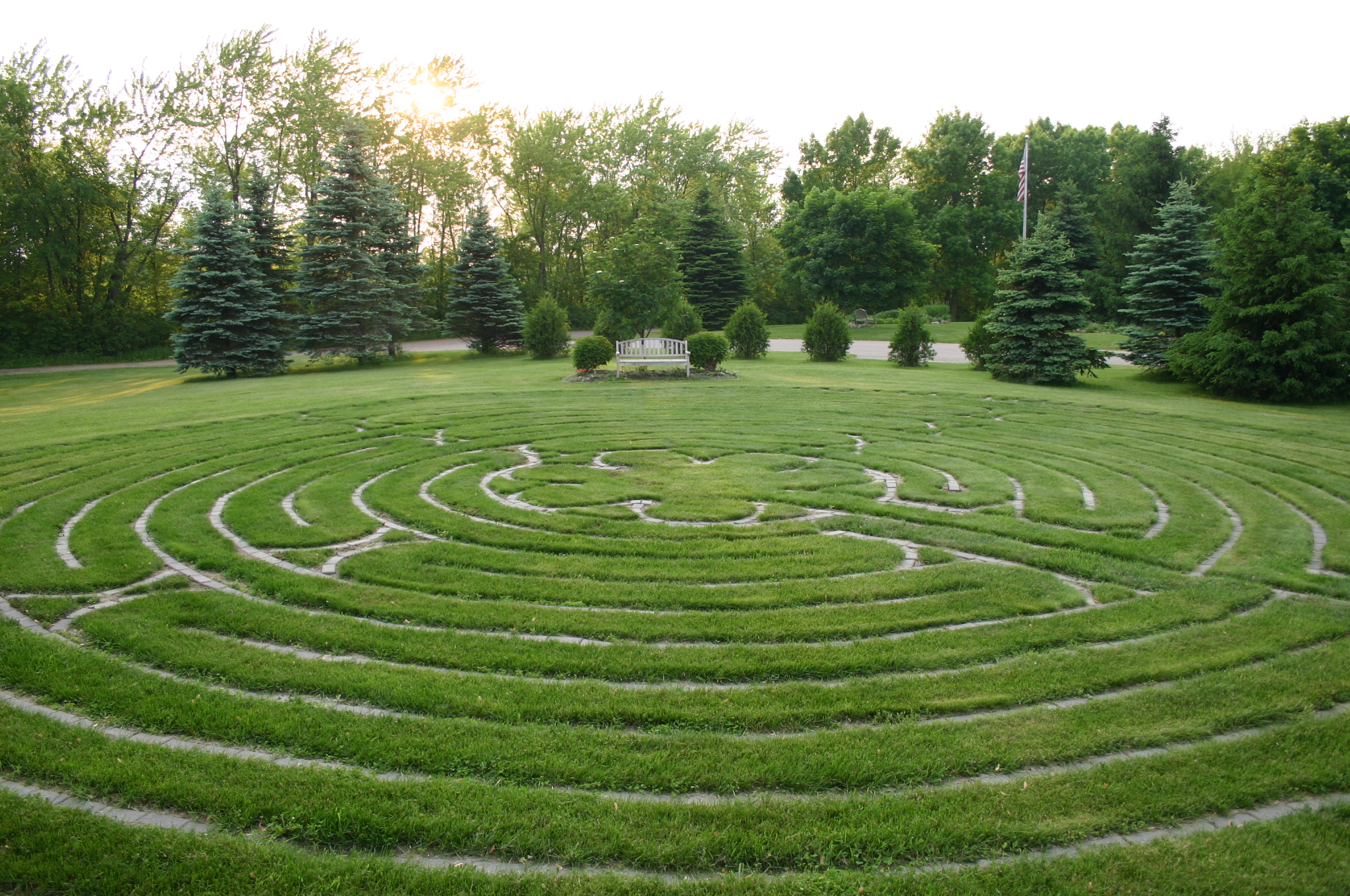
Last week, I witnessed a mama snapping turtle far from the lake searching for a safe place to lay her eggs. Unrushed, she’d walk a little, rest, walk some more, and then pause to look around until she found refuge under a large log. When finished with this annual pilgrimage, she’d return to her home by the water. It not only felt like a metaphor for retreating, but left me reflecting on one practice specifically.
A Prayer Labyrinth, pictured above, is a spiritual tool that invites us to pray and meditate while walking. The experience is usually divided into three parts: a journey inward on a winding path; time for contemplation in the center; and a journey outward returning to the beginning. There are many ways to walk a labyrinth; below is what has been most meaningful for me.
Release.
A few summers ago, I had the immeasurable joy of taking a group of middle schoolers on a camping trip near Pictured Rocks National Lakeshore in Michigan’s Upper Peninsula. Our campsite was so remote that it required a three-mile hike from the parking lot. Since we didn’t want to carry any extra weight, every packed item had to be essential.
Early the first morning, when youth arrived at the church, my colleague instructed them to find their own table in the dining room and empty their entire backpack. Together we sifted through everything they’d packed, setting aside anything that would only make the journey more difficult. If you’ve ever gone backpacking, you know how something seemingly small can grow far heavier than expected.
Have you ever carried a small thing for a long time? Do you sometimes wish you could unload the nonessentials right where you are? What one thing are holding onto right now that isn’t serving you? Chances are if you’re reading this, you’re carrying too much.
The first movement of a prayer labyrinth invites us to release anything making our life difficult. Worry, fear, sin, shame, regret, doubt, a bad memory, an unkind message, a lie we tell ourselves. I imagine that with each step, I’m slowly unpacking my bag, dropping every burden behind me. I might begin at a crawl, later picking up my pace as well as my posture.
On your unrushed, winding walk to center, don’t worry about looking too far ahead. Finding your next step is enough. It’s a labyrinth, not a maze. You may feel like you’re wandering, but you’re not lost. Take your time with this first third of the journey, and wait to rest in center only when you’ve let go of as much as you can.
Receive.
While learning about the Lord’s Supper (Communion) in seminary, I remember my Worship and Preaching professor saying, “You can’t receive the elements with closed hands.” His intention was to emphasize the importance of confessing our shortcomings, acknowledging our limitations, and honoring our very real human needs for nourishment, connection, and hope. We empty ourselves as much as possible in order to receive as much as possible. Priest, professor, and writer Henri Nouwen captured this in his poem “Clenched Fists:”
Dear God,
I am so afraid to open my clenched fists!
Who will I be when I have nothing left to hold on to?
Who will I be when I stand before you with empty hands?
Please help me to gradually open my hands
and to discover that I am not what I own,
but what you want to give me.
And what you want to give me is love—
unconditional, everlasting love.
Amen.
In the center of a labyrinth, the invitation is simple and profound: rest and receive. Be still. Know that God is good and so are you. Having emptied your burdens along the path inward, all you do now is open your hands and receive the love God longs to give. Receive the assurance that one day all shall be well. Receive the peace that in this moment you are okay. Listen to the birds and the breeze and your breath, and breathe easy here.
At the end of your time in the center, you may be left with a tangible word or an indescribable shift in your spirit. Give thanks for whatever you received and begin your journey outward.
Return.
After we’ve spent time in the labyrinth’s center, it may be tempting to think the experience is over, but it’s not. The journey of re-tracing our steps from our center back to the world from which we came is a significant part of the process.
Pay attention to the difference you feel now compared to how you felt at the start. You might notice along the path something from your pack you left behind on the journey inward. Let it be, and give thanks. Then consider how you might carry yourself after this experience.
Did anything you received in the center change how you will live? How will your daily rhythm be impacted? Did anything emerge that you want to devote more attention to? Reflect on how you are returning changed, yet more fully yourself. Talk with God about anything else alive in you.
Reflect.
Mount Olivet Conference & Retreat Center is blessed with a beautiful outdoor labyrinth, open for guests to use at any time. With that said, you don’t need to walk through a physical labyrinth to have a meaningful experience with this spiritual practice. You could print an image of a labyrinth and trace it with your finger while contemplating. You may simply use the three movements as prompts to guide reflection. However you engage this, may it nourish your spirituality and support you in retreating wherever you are.